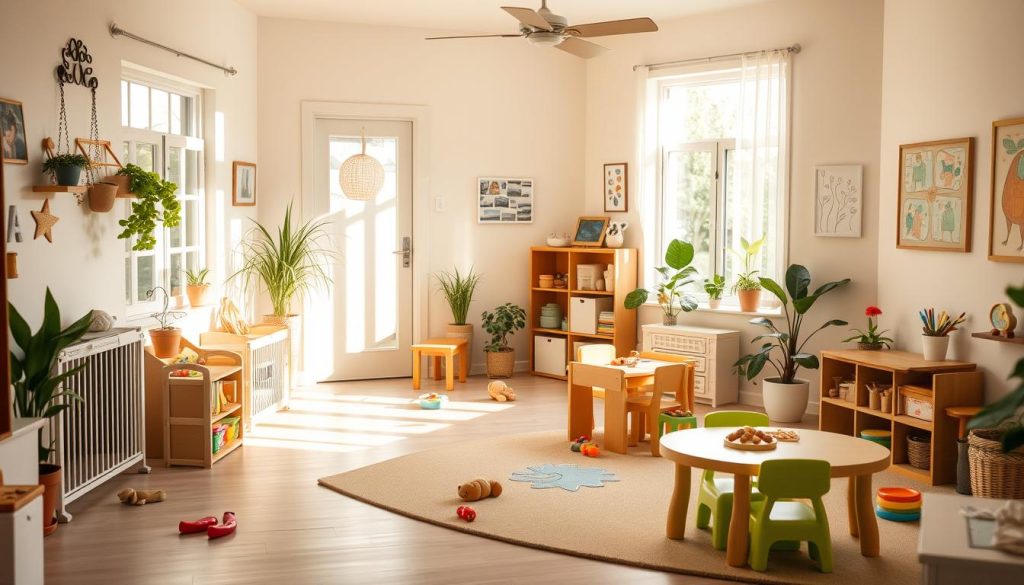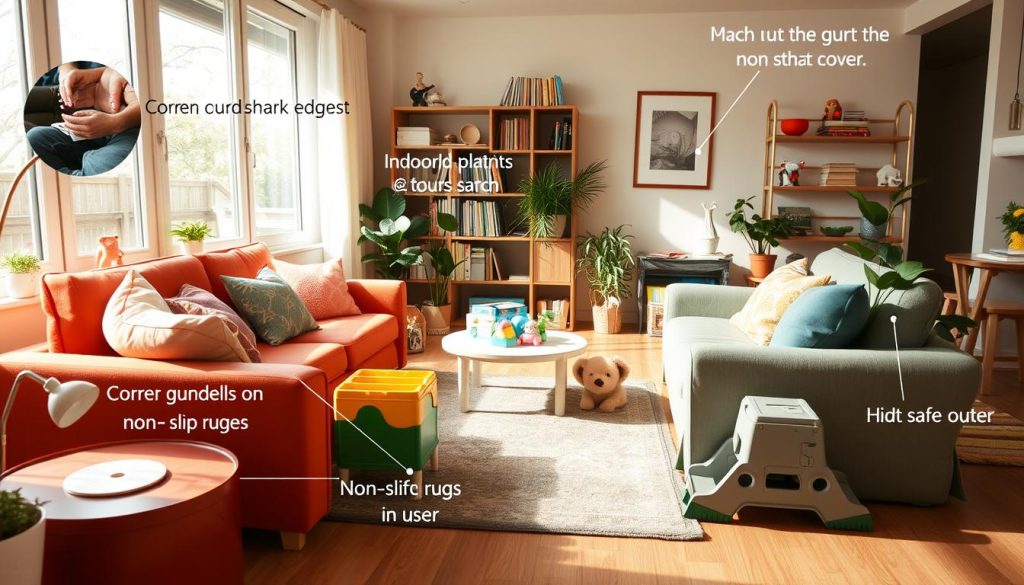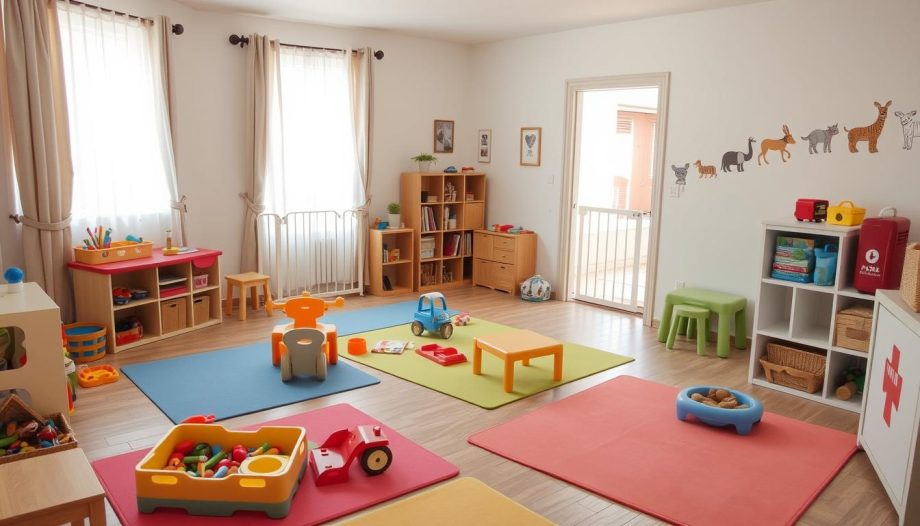In our journey as caregivers, ensuring safety in childcare is our top priority. Creating a nurturing and secure environment significantly impacts children’s development and well-being. By focusing on home-based childcare safety, we empower children to learn, explore, and play with confidence.
Factors like the age of the children, the layout of our home, and the number of children in our care all influence the child safety measures we implement. Educating ourselves about common childhood injuries and their preventive measures is crucial. Together, by prioritizing childcare environment safety, we can reassure parents that their children are in capable hands, fostering a safe space for growth.
Understanding the Importance of Safety in Home-Based Childcare
In our home-based childcare settings, the importance of safety in childcare cannot be underestimated. Creating a safe childcare environment not only protects children from potential hazards but also fosters a sense of security that enhances their overall well-being. By focusing on safety measures, we can ensure that children thrive while in our care.
Creating a Safe Environment for Children
When we think about a safe childcare environment, childproofing our homes becomes a vital first step. This process includes identifying and mitigating potential risks around the house. Key safety measures we can implement include:
- Securing furniture to prevent tipping.
- Storing hazardous materials out of reach of children.
- Covering electrical outlets and ensuring cords are safely tucked away.
- Using gates to limit access to potentially dangerous areas.
By taking these proactive steps, we can create a nurturing space where children can explore freely while remaining safe from harm.
The Role of Supervision in Ensuring Safety
Supervision in childcare plays a critical role in maintaining safety. Constant vigilance allows us to quickly address any potential accidents that may arise. Engaging children through age-appropriate activities while maintaining a watchful eye supports effective management of safety. Important aspects of supervision include:
- Regularly checking in on children during playtime.
- Being aware of their interactions with others.
- Understanding the developmental stages of each child to anticipate their needs.
This kind of attentive supervision significantly reduces risks, keeping our little ones safe and secure.

Safety in Childcare: Best Practices for Parents and Caregivers
To create a safe environment for the children in our care, we must adopt comprehensive strategies focused on childproofing, emergency preparedness, and regular safety inspections. Implementing these best practices can significantly enhance the safety of our childcare settings.
Childproofing Your Home
Childproofing is a vital aspect of ensuring safety in our homes. By following effective childproofing tips, we can minimize the risk of accidents. Here are some important strategies to consider:
- Secure heavy furniture to walls to prevent tipping.
- Use safety gates to restrict access to stairs.
- Install outlet covers to protect from electrical hazards.
- Keep hazardous items, such as cleaning supplies, out of reach.
- Cover sharp corners of furniture to avoid injuries.
Emergency Preparedness and Response Plans
We must prioritize emergency preparedness in childcare by having a clear response plan for potential crises. Planning helps us act swiftly and effectively when emergencies arise. Key elements of effective plans include:
- Regular drills for fire, evacuation, and medical emergencies.
- Clear communication channels for alerting parents and caregivers.
- Emergency contact list readily available and up to date.
- Access to first aid training for all caregivers.
- Designated safe areas within the home in case of emergency.
Regular Safety Inspections
Conducting safety inspections for childcare is essential to identify and address potential hazards before they cause harm. We should establish a routine for regular inspections that includes:
| Inspection Frequency | Areas to Inspect | Checklist Items |
|---|---|---|
| Monthly | Toys and Play Areas | Look for broken toys, small parts, or sharp edges. |
| Quarterly | Outdoor Spaces | Check for unsafe surfaces, fencing issues, or poisonous plants. |
| Biannually | Safety Equipment | Test smoke detectors, carbon monoxide alarms, and fire extinguishers. |

Building a Culture of Safety in Childcare
Establishing a robust culture of safety in childcare is crucial for everyone’s peace of mind. We recognize that safety is not merely a checklist item; it’s a vital part of our daily interactions with children. By making safety a central theme in our routines, we naturally integrate it into the lives of those we care for. This involves ongoing discussions about safety, not just on a surface level, but by teaching children accessible safety concepts that they can understand and apply.
Promoting safety in childcare also calls for collaboration with parents and caregivers. We believe in sharing our safety goals and protocols openly, fostering an environment where everyone is on the same page. Regular community safety workshops can serve to enhance our skills and knowledge about effective childcare safety culture practices. Such events encourage participation and engagement, allowing us to learn from each other and build a stronger network focused on child safety.
As we prioritize safety and create a culture that values it within childcare settings, we instill confidence in parents while promoting the well-being of all children under our care. When safety becomes a shared value, we collectively create a nurturing environment where children can thrive, learn, and play without unnecessary risks. By consistently modeling safe behaviors and embedding a culture of safety in childcare, we pave the way for a brighter, safer future for everyone involved.




